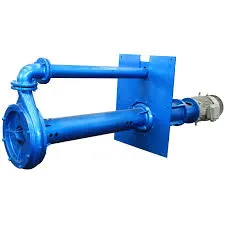Georgian
- Afrikaans
- Albanian
- Amharic
- Arabic
- Armenian
- Azerbaijani
- Basque
- Belarusian
- Bengali
- Bosnian
- Bulgarian
- Catalan
- Cebuano
- Corsican
- Croatian
- Czech
- Danish
- Dutch
- English
- Esperanto
- Estonian
- Finnish
- French
- Frisian
- Galician
- Georgian
- German
- Greek
- Gujarati
- Haitian Creole
- hausa
- hawaiian
- Hebrew
- Hindi
- Miao
- Hungarian
- Icelandic
- igbo
- Indonesian
- irish
- Italian
- Japanese
- Javanese
- Kannada
- kazakh
- Khmer
- Rwandese
- Korean
- Kurdish
- Kyrgyz
- Lao
- Latin
- Latvian
- Lithuanian
- Luxembourgish
- Macedonian
- Malgashi
- Malay
- Malayalam
- Maltese
- Maori
- Marathi
- Mongolian
- Myanmar
- Nepali
- Norwegian
- Norwegian
- Occitan
- Pashto
- Persian
- Polish
- Portuguese
- Punjabi
- Romanian
- Russian
- Samoan
- Scottish Gaelic
- Serbian
- Sesotho
- Shona
- Sindhi
- Sinhala
- Slovak
- Slovenian
- Somali
- Spanish
- Sundanese
- Swahili
- Swedish
- Tagalog
- Tajik
- Tamil
- Tatar
- Telugu
- Thai
- Turkish
- Turkmen
- Ukrainian
- Urdu
- Uighur
- Uzbek
- Vietnamese
- Welsh
- Bantu
- Yiddish
- Yoruba
- Zulu
Telephone: +86 13120555503
Email: frank@cypump.com
აგვ . 21, 2024 10:25 Back to list
Analysis and Design of Pumping Systems in Pipeline Engineering
Pump Pipeline System Analysis and Design
The design and analysis of pump pipeline systems are critical components in the engineering and industrial sectors, affecting efficiency, sustainability, and safety in various applications. Such systems are ubiquitous, found in water distribution networks, chemical processing, oil and gas transport, and many other fields. Therefore, a robust understanding of the dynamics involved in the design of these systems is essential for optimizing performance and ensuring reliability.
At the core of a pump pipeline system is the pump itself, which is responsible for moving fluids through the pipeline. The selection of an appropriate pump involves several considerations, including the type of fluid being transported, the desired flow rate, and the total dynamic head (TDH) required to overcome both gravitational and system losses. The hydraulic design should also account for the viscosity, density, and temperature of the fluid, as these factors will significantly impact system performance.
An important aspect of pump pipeline system analysis involves understanding the characteristics of fluid flow. There are primarily two types of flow laminar and turbulent. Laminar flow occurs at low velocities and is characterized by smooth, parallel layers of fluid. In contrast, turbulent flow, which occurs at higher velocities, is characterized by chaotic and irregular fluid motion. The transition from laminar to turbulent flow significantly increases frictional losses and impacts the overall efficiency of the system. Therefore, predicting flow regimes is crucial when considering pump and pipeline designs.
Another critical factor in the analysis of pump pipeline systems is the pressure loss due to friction. The Darcy-Weisbach equation is frequently used to calculate this pressure loss in pipelines, while the Hazen-Williams equation often applies to water distribution systems. Accurate calculations of pressure loss are essential for selecting a pump with the appropriate power and ensuring that the system operates within its designed specifications.
pump pipeline system analysis and design

Moreover, the layout of the pipeline itself plays a pivotal role in the overall system design. Factors such as pipe diameter, length, and the presence of bends, fittings, and valves can influence flow characteristics and energy consumption. Minimizing changes in direction and maintaining a uniform diameter can help reduce turbulence and energy losses. Additionally, careful consideration must be given to the materials used for the pipeline, as different materials offer varying levels of resistance to corrosion, pressure, and temperature changes.
Another significant consideration in the design process is the integration of control systems. Modern pump pipeline systems often employ advanced automation and monitoring technologies to enhance operational efficiency and safety. These control systems can regulate flow rates, monitor pressure, and detect faults in real-time. Implementing a control strategy, including variable frequency drives (VFDs), can optimize pump performance and reduce energy costs.
Sustainability is an increasingly critical aspect of pump pipeline system design. Engineers are now focusing on energy-efficient pumps and alternative energy sources to reduce the environmental impact. The use of renewable energy, such as solar or wind power, in conjunction with intelligent automated systems can lead to substantial reductions in overall energy consumption and greenhouse gas emissions.
In conclusion, the analysis and design of pump pipeline systems require a multifaceted approach that considers fluid dynamics, pressure loss, system layout, control integration, and sustainability. By focusing on these aspects, engineers can optimize performance, reduce costs, and enhance the reliability of pump pipeline systems across various applications. This holistic approach not only addresses the immediate operational requirements but also contributes to broader environmental goals, creating systems that are both efficient and sustainable.
-
ISG Series Vertical Pipeline Pump - Chi Yuan Pumps Co., LTD.|High Efficiency, Energy Saving, Low Noise
NewsJul.30,2025
-
ISG Series Vertical Pipeline Pump- Chi Yuan Pumps|High Efficiency&Low Noise
NewsJul.30,2025
-
ISG Series Vertical Pipeline Pump-Chi Yuan Pumps Co., LTD.|High Efficiency&Energy Conservation
NewsJul.30,2025
-
ISG Series Vertical Pipeline Pump - Chi Yuan Pumps Co., LTD.|Advanced Hydraulic Design&Energy-Efficient Solutions
NewsJul.30,2025
-
ISG Series Vertical Pipeline Pump - Chi Yuan Pumps Co., LTD.
NewsJul.30,2025
-
ISG Series Vertical Pipeline Pump - Chi Yuan Pumps Co., LTD.|energy-efficient fluid handling&industrial durability
NewsJul.30,2025










